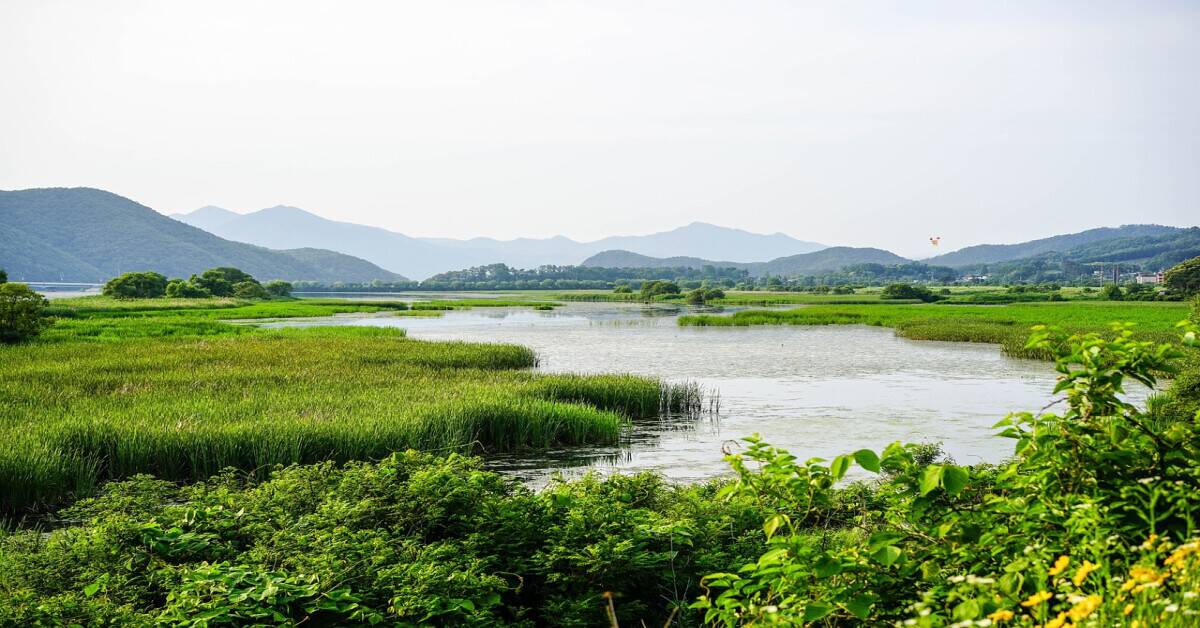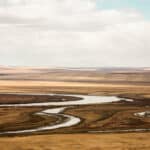Wetlands are unique ecosystems where land and water meet, creating a rich environment for diverse plants and animals. These areas, such as marshes, swamps, and bogs, hold a vital role in maintaining nature’s balance. The benefits of wetlands for the environment are vast, extending from providing habitats for wildlife to filtering water naturally.
Wetlands are crucial to ecosystems because they support a wide variety of species, from fish to migratory birds. Furthermore, they help protect surrounding areas by absorbing excess water, reducing flood risks. Wetlands also act as natural filters, cleaning water by trapping pollutants.
The environmental benefits of wetlands go beyond wildlife support; they play a role in climate regulation by storing carbon. Protecting wetlands means safeguarding our planet’s health and the well-being of future generations.
Understanding the Wetland Ecosystem
Wetland ecosystem is a rich and diverse environment where land meets water. This habitat is home to a wide range of plants, animals, and microorganisms, all thriving under unique conditions. Wetlands come in various forms, each with its own characteristics and species. Below are the main types of wetlands:
Marshes
Marshes are wetlands filled with grasses, reeds, and other soft-stemmed plants. These areas often have standing water that supports fish, amphibians, and waterfowl. The plants in marshes provide food and shelter for countless creatures, making them vibrant ecosystems.
Swamps
Swamps are wetlands dominated by trees and shrubs, usually found near rivers or lakes. They are teeming with life, from reptiles and mammals to birds and insects. Swamps are especially important because their trees help prevent soil erosion.
Bogs
Bogs are acidic wetlands where mosses thrive. They often have low nutrient levels, making them unique habitats for specialized plants like cranberries and pitcher plants. Bogs also help store carbon, which can reduce greenhouse gases.
Each wetland type creates specific conditions that support varied wildlife. These habitats offer shelter, breeding grounds, and food sources, helping countless species to survive and thrive.
Importance of Wetlands for the Environment
Wetlands play a crucial role in sustaining healthy ecosystems and maintaining environmental balance. Their importance for the environment extends beyond biodiversity, reaching into areas like flood control, water purification, and climate regulation.
Wetlands act as natural sponges, absorbing excess water during heavy rains and reducing flooding risks in nearby areas.
Furthermore, wetlands filter pollutants from water, improving water quality for rivers and lakes downstream. They also trap carbon, which helps slow climate change. The environmental benefits of wetlands are essential for keeping our planet healthy and stable.
Besides supporting life, wetlands provide essential services that benefit humans and wildlife alike, proving their immense ecological value.
Key Environmental Benefits of Wetlands
Wetlands provide essential environmental benefits, including flood control, water purification, and climate regulation. They also support biodiversity by offering habitats for various species.
Furthermore, wetlands help prevent soil erosion and contribute to carbon storage, making them vital for a healthy ecosystem and a stable climate.
Biodiversity and Habitat Support
Wetlands are vibrant habitats that support an incredible range of life. These ecosystems offer essential homes for countless species, including plants, birds, mammals, amphibians, and insects. Wetlands are often refuges for endangered species, providing safe breeding grounds, feeding areas, and shelter from predators.
For example, marshes are key habitats for waterfowl, while bogs support rare plants like pitcher plants and sundews. Besides, many migratory birds rely on wetlands for resting and refueling during long journeys.
The dense vegetation in wetlands also offers protection for young animals, which increases survival rates. By preserving wetlands, we protect these diverse species and contribute to global biodiversity conservation.
Flood Control and Water Storage
Wetlands act as natural buffers, reducing the risk of floods. During periods of heavy rainfall, they absorb and store large amounts of water, releasing it slowly into rivers and streams. This function lowers water levels, which helps protect nearby communities and reduces damage to property.
For example, flood-prone areas benefit significantly from wetlands that can hold back excessive water flow. Wetlands also recharge groundwater supplies, which is important in times of drought.
Therefore, by preserving wetlands, we help control floods, protect infrastructure, and maintain a steady water supply for local ecosystems and communities.
Water Purification and Quality Improvement
Wetlands are often called “nature’s kidneys” for their ability to purify water. As water flows through a wetland, it slows down, allowing sediments, pollutants, and nutrients to settle.
Wetlands filter out harmful substances like heavy metals, pesticides, and excess nitrogen, making the water cleaner and safer before it reaches lakes, rivers, or groundwater sources. This natural purification process protects aquatic ecosystems downstream, where clean water is crucial for fish, plants, and people.
Besides, wetlands reduce the need for costly water treatment facilities, offering a natural and sustainable solution to improving water quality.
Climate Regulation and Carbon Sequestration
Wetlands play a vital role in climate regulation. These ecosystems are natural carbon sinks, meaning they capture and store carbon from the atmosphere. Wetlands, especially peatlands, sequester significant amounts of carbon, helping to reduce greenhouse gas levels that contribute to climate change.
Furthermore, wetlands store more carbon per unit area than most other ecosystems, making them powerful allies in mitigating global warming. However, when wetlands are drained or destroyed, the stored carbon is released, contributing to carbon emissions.
Protecting wetlands is essential in the fight against climate change, as they help keep greenhouse gases at lower levels.
Erosion Prevention
Wetlands help prevent soil erosion by stabilizing shorelines and riverbanks. The dense vegetation in these ecosystems, including the root systems of trees, shrubs, and grasses, anchors the soil in place, reducing the impact of water flow on the land.
In areas with strong tides or river currents, wetlands serve as a barrier, absorbing energy and preventing soil from being washed away.
For example, swamps and marshes along riverbanks can reduce erosion, which helps maintain soil health and protects coastal habitats. By preventing erosion, wetlands safeguard land for agriculture, wildlife, and human settlements, highlighting their critical role in environmental health.
Also Read: The Importance of Wetland Preservation
Additional Benefits of Wetlands
Beyond environmental support, wetlands offer numerous other benefits that are often overlooked. Wetlands provide recreational spaces for activities like birdwatching, hiking, and kayaking, attracting visitors and boosting local economies.
These natural areas also offer rich educational opportunities, allowing students and researchers to study ecosystems, biodiversity, and conservation. Additionally, wetlands support sustainable livelihoods, especially for communities that rely on fishing, plant harvesting, and ecotourism.
Many wetlands hold cultural significance as well, often featured in the traditions, histories, and beliefs of nearby communities. These lesser-known benefits show how wetlands serve as valuable resources, supporting people in ways that extend beyond their ecological functions.
Wetlands in India
India is home to a wide variety of wetlands, including lakes, rivers, swamps, and coastal lagoons. Major wetlands in India include the Sundarbans in West Bengal, Chilika Lake in Odisha, and Loktak Lake in Manipur.
These wetlands are crucial for India’s biodiversity, supporting numerous species of fish, birds, and plants. Besides, they provide essential resources and livelihoods for many local communities, making them a significant part of India’s natural heritage.
The importance of wetlands in India goes beyond supporting wildlife. They play a critical role in controlling floods by absorbing excess water during heavy rains and reducing erosion. Wetlands also help recharge groundwater, purify water by trapping pollutants, and regulate the climate by capturing carbon.
However, many wetlands face threats from pollution, encroachment, and climate change, which reduce their ability to offer these benefits.
To conserve wetlands, India has implemented policies and conservation strategies. The country joined the Ramsar Convention, and now 75 Indian wetlands are designated as Ramsar sites, recognized for their ecological importance.
Additionally, the government has launched the National Plan for Conservation of Aquatic Ecosystems to protect and restore threatened wetlands. Local and community-based conservation initiatives also support these efforts by raising awareness and promoting sustainable practices around wetlands.
Protecting India’s wetlands requires cooperation from communities, the government, and environmental groups. Together, they can ensure these valuable ecosystems continue to benefit both nature and people across the country.
Threats to Wetlands and the Need for Conservation
Wetlands face numerous threats from both human activities and natural causes. Urban development, agriculture, and pollution have led to widespread wetland destruction, while climate change alters their delicate ecosystems.
These activities drain wetlands or introduce harmful chemicals, disrupting their ability to support wildlife and filter water. Besides, rising sea levels and severe weather events erode and reshape wetland areas, further stressing these habitats.
Conserving wetlands is essential to preserve their many environmental benefits, from flood control to biodiversity support. By protecting wetlands, we ensure they continue to serve as natural shields, resource providers, and biodiversity sanctuaries for future generations.
Conclusion
Wetlands are essential ecosystems that provide numerous environmental benefits. They support diverse wildlife, improve water quality, help control floods, and play a significant role in carbon storage.
These natural areas are vital not only for maintaining biodiversity but also for protecting human communities from natural hazards. The benefits of wetlands for the environment extend far beyond their borders, making their preservation critical for a sustainable future.
However, many wetlands are at risk due to human activities and climate change. By recognizing the environmental importance of wetlands, communities can better appreciate the need for conservation.
Protecting these ecosystems is essential to sustaining their invaluable services, from supporting wildlife to reducing environmental threats. Therefore, it is crucial to take actions that help safeguard wetlands for the benefit of future generations.








